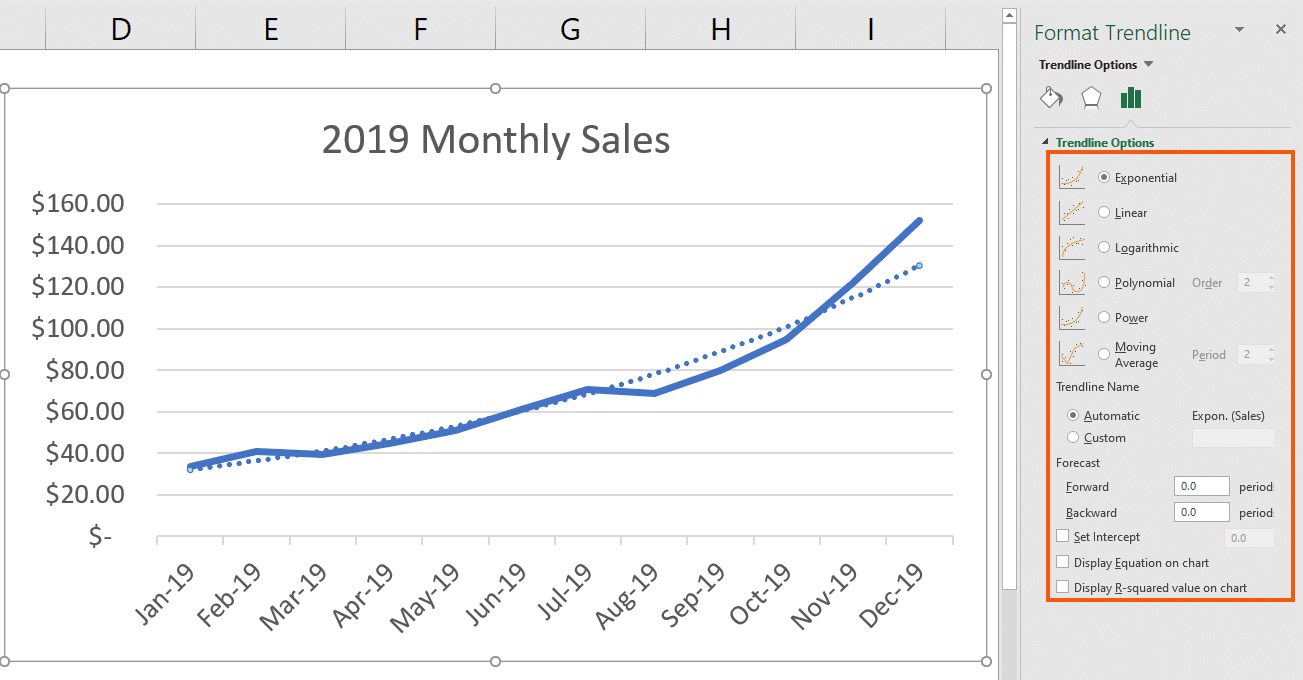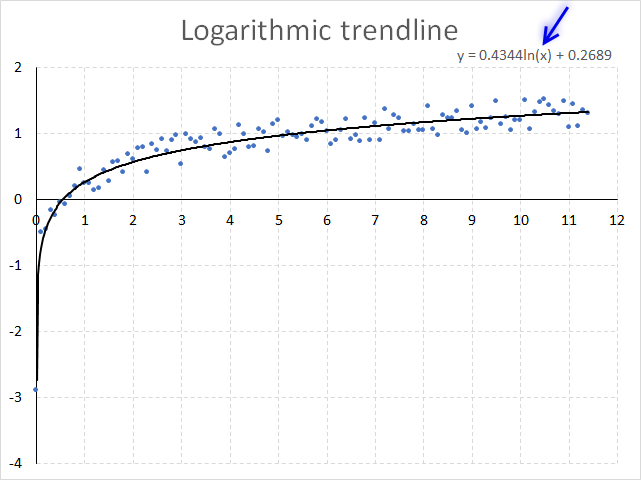

You cannot add a trendline to 3-D or stacked charts, pie, radar and similar visuals.īelow, there is an example of a scatter plot with an extended trendline: Excel graphs that support trendlinesĪ trendline can be added to a variety of Excel charts, including XY scatter, bubble, stock, as well as unstacked 2-D bar, column, area and line graphs. In some cases, it can also be used to forecast trends. A best-fit line shows the general trend in all the data, ignoring statistical errors and minor exceptions. Visually, a trendline looks somewhat similar to a line chart, but it doesn't connect the actual data points as a line chart does. This analytical tool is most often used to show data movements over a period of time or correlation between two variables.

This way you only change the coefficients, not the formulas based on them.A trendline, also referred to as a line of best fit, is a straight or curved line in a chart that shows the general pattern or overall direction of the data. For example, put your coefficients into cells D1:D4, put your X values into A3:A6, enter this formula into B3Īnd fill this down to B6. If you're just finding it tedious to retype the formula =A+B*x+C*x^2+D*x^3 in each cell, well, you should be entering the coefficients into separate cells, and point the formulas at these cells. If you don't want to enter the trendline coefficients inaccurately time after time, use LINEST. I'm also not sure what you're asking for. You say it's not linear, but what you showed before was best approximated by a linear fit. So be careful what formula you will use for extrapolating.

I see that both of those points were already covered by John Peltier. That's the maximum precision that Excel chooses to format and it works equally well for all coefficients, regardless of magnitude. I prefer to use the format Scientific with 14 decimal places.

If the LINEST coefficients do not seem to work, it might be necessary and sufficient to copy the coefficients from the chart trendline label.īut if you do that, be sure to format the trendline label to display sufficient precision. That is possible and okay, as long as both predict about the same yhat.) (Note: I am not talking about when LINEST and the chart trendline derive very different coefficients. I believe that happens because the input to LINEST is arrays of exponentially-scaled values, resulting in differences beyond the limits of 64-bit binary floating-point. However, there are data sets for which LINEST does not behave as well as the chart trendline algorithm. Shg demonstrates how to use LINEST for that purpose in posting #4.


 0 kommentar(er)
0 kommentar(er)
